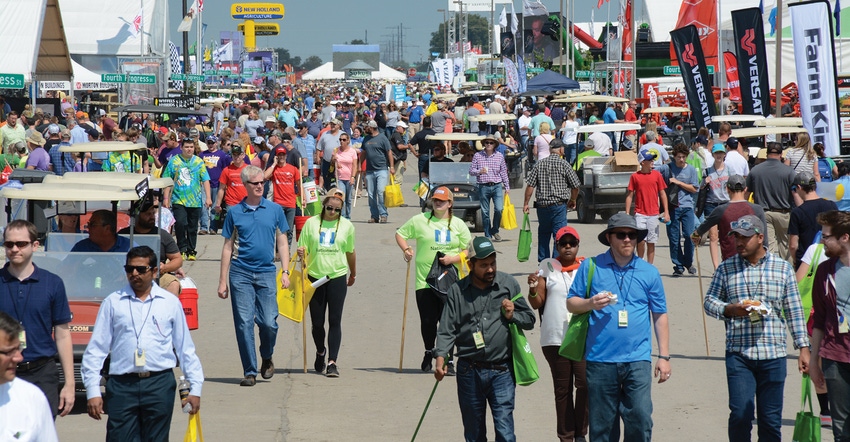
Matt Jungmann and his staff had a lightbulb moment in 2011, when high winds took down a stage at the Indiana State Fair and seven people were killed.
As Farm Progress national events director and manager of the Farm Progress Show — which brings tens of thousands of people to the outdoor event populated by tents and temporary structures — Jungmann knew they needed a better plan for bad weather.
And while severe weather isn’t as likely in late August, it’s not impossible either. In 2011, Jungmann made the call to shut down Husker Harvest Days, a sister show in Nebraska held in September, when sustained winds reached 40 mph and were gusting to 60 mph, threatening tents. In 2014, the Farm Progress Show closed early in Boone, Iowa, due to lightning.
“That was a pretty stressful event for everybody involved. Nobody wants to close the show, but I don’t want anybody to get hurt,” Jungmann says. “I can’t have somebody get hurt on the show grounds.”
In 2018 in Boone, Jungmann and staff had to clear the grounds on the first day of the show due to lightning — a tough call but the right one, given the number of nearby lightning strikes.
“The system worked well in 2018, and we learn from each event and continue to take notes,” he adds. “With that many tents and grain legs and augers, there’s a lot of things that are 60 and 80 feet in the air. It’s an 80-acre lightning rod. There is no safe place in a lightning event, if one should occur.”
Thanks to standards created through the Event Safety Alliance, measurements and responses are based on a prescribed action plan. For example, when lightning gets within 12 miles, a warning over the public address system is given. When it’s within 8 miles, the grounds are cleared. When it’s clear within 8 miles for 30 minutes, the grounds are reopened.
In effect, clearing the grounds means everyone must return to their vehicles.
Jungmann says those kinds of plans bring peace of mind to exhibitors, too, who have people on the grounds to protect.
“They need a plan, and we need a plan, and it’s safer for everybody involved,” he says.
Be in the know at the show
Want to know what’s happening at the show as soon as it happens? Sign up for text updates by texting FPS21 to 20505. You’ll get event reminders, daily schedule highlights, emergency and weather alerts, and exclusive exhibitor promotions. You’ll only get the biggest news and information that makes your show experience better. Plus, you can opt out at any time.
This year’s Farm Progress Show is Aug. 31 to Sept. 2 in Decatur, Ill. Learn more at FarmProgressShow.com.
About the Author(s)
You May Also Like






